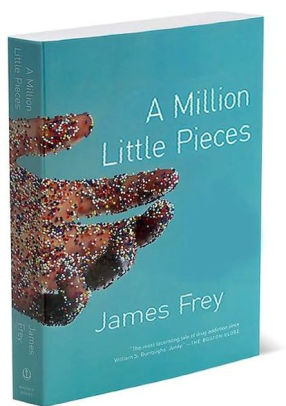James Frey’s “A Million Little Pieces” has polarized readers since its release, inciting both fervent admiration and vehement criticism. This memoir, arguably as contentious as it is compelling, delves into the harrowing world of addiction, recovery, and the intricate labyrinth of the human condition. In this review, we will dissect the various layers of content that new readers can anticipate, unveiling the raw heart and soul of Frey’s poignant narrative.
At its core, “A Million Little Pieces” is a visceral exploration of addiction. Readers are thrust into Frey’s turbulent existence as he battles an overwhelming compulsion to drink and use drugs. The narrative begins with him waking up in a rehabilitation facility, cloaked in the fog of his vices. As Frey recounts his experiences, he employs an unflinching honesty that evokes a spectrum of emotions—from empathy to outrage. The intrinsic brutality of addiction is painted with vivid strokes, showcasing the darker recesses of his psyche.
Moreover, Frey’s use of fragmented prose serves a twofold purpose. It mirrors the disintegration of the protagonist’s life while simultaneously drawing readers deeper into his disarray. This stylistic choice cultivates a sense of immediacy and urgency, immersing the audience in a chaotic world where time seems to collapse under the weight of addiction. Short sentences punctuate the narrative like fleeting moments of clarity amid the overwhelming turmoil, creating a rhythm that reverberates with the tension of Frey’s circumstances.
As readers traverse this turbulent landscape, they encounter not only the harrowing journey of recovery but also rich character studies that populate Frey’s life. From fellow patients to staff members, each character is expertly fleshed out. Readers are introduced to a motley crew of individuals grappling with their own demons, showcasing the diversity of human experience within the walls of the rehab center. The author’s astute observations reveal the layers of complexity inherent in every person’s struggles, inviting readers to reflect upon their own perspectives on addiction and recovery.
Amidst the darkness, Frey intersperses moments of poignancy that illuminate the potential for redemption. Through interactions with mentors and peers, inklings of hope arise, revealing the threads of connection that can bind even the most fractured souls. These instances of camaraderie serve as a counterbalance to the pervasive despair, emphasizing that recovery is not a solitary path but rather a communal effort. The tenderness of these relationships often shines brightest in the most dire moments, offering glimmers of light against a backdrop of shadow.
Readers can also expect Frey’s narrative to delve into the psychological aspects of addiction. The memoir is not merely a catalog of events, but a deep introspection into the emotional landscapes that accompany substance abuse. Frey articulates the intricacies of human emotions—the fear, the guilt, the euphoria—imbuing his account with a psychological depth that invites analysis. The discourse around addiction transcends mere substance, probing into the underlying issues of self-worth, trauma, and the quest for identity. Frey’s reflections on these themes serve as an invitation for readers to contemplate the broader socio-cultural implications of addiction as well.
Furthermore, the impact of Frey’s choice to abstain from embellishing his story cannot be overlooked. This unvarnished honesty has garnered both admiration and derision. For some, his portrayal of addiction is a brutal truth that resonates profoundly; for others, the alleged embellishment of experiences raises ethical concerns about memoir as a genre. The conversation surrounding authenticity in memoir prompts readers to grapple with what constitutes truth in storytelling and whether emotional resonance outweighs factual precision. Such discussions enhance the reading experience by inviting deeper engagement with the text.
As we explore deeper into the narrative, the motif of rebirth emerges, symbolizing the arduous journey toward recovery. Frey doesn’t shy away from depicting the relapse, setbacks, and the turmoil that often accompany healing. Instead, he presents them as integral parts of the recovery process. This raw portrayal dispels the myth of a linear path to sobriety, reminding readers that healing is often two steps forward, one step back. The resonance of this motif is particularly compelling, as it encapsulates a universal truth: the journey of self-discovery is fraught with challenges and victories alike, making it all the more relatable.
A Million Little Pieces is not merely a book about addiction; it is an exploration of resilience, therefore encouraging readers to confront their own vulnerabilities. Frey’s capacity to articulate despair, coupled with the glimmers of strength found within fragility, creates an emotional tapestry that is both beautiful and disquieting. As the narrative progresses, readers witness a gradual evolution, suggesting that redemption is attainable, albeit through arduous struggle and profound self-reflection.
In conclusion, “A Million Little Pieces” transcends traditional memoir boundaries, inviting readers into a world that resonates on multiple levels. The raw nature of Frey’s experiences, combined with careful character development and psychological insight, culminates in a reading experience that both challenges and inspires. For those seeking a narrative that is rich in complexity and emotional depth, Frey’s memoir provides a powerful and unvarnished lens through which to view the multifaceted nature of addiction and the quest for self. Prepare to be challenged, moved, and ultimately transformed by this extraordinary odyssey of healing and hope.
